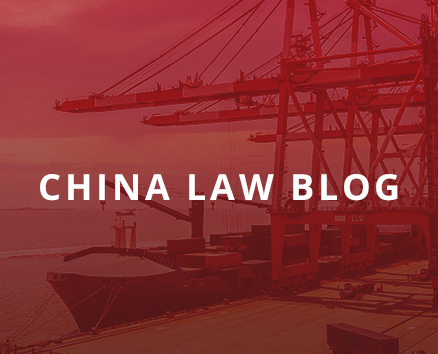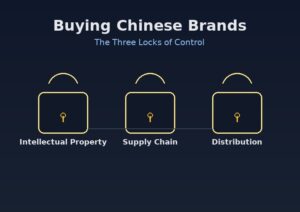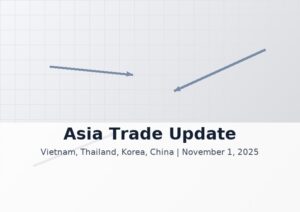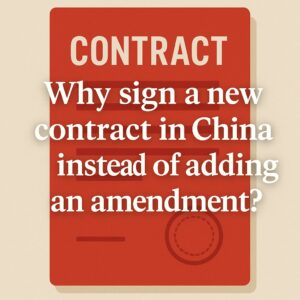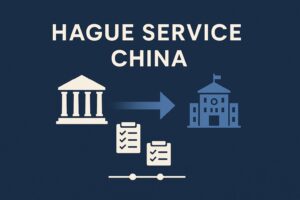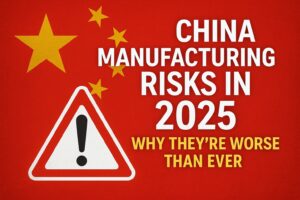The Trump Tariffs and THE One Good Path to Recovery: Zero Tariffs
President Trump’s recent tariff announcements represent a seismic shift in global trade policies, overturning decades of established norms overnight. The U.S. has unilaterally imposed tariffs on imports from nearly every country, marking a sharp departure from the post-WWII era of negotiated tariffs and free trade agreements
The immediate impact has been profound: global stock markets have plunged, with the U.S. market alone losing $9.6 trillion since Inauguration Day—$5 trillion of that in just two days (April 2 and April 4). Under this new tariff regime, all nations face a baseline 10% U.S. import tariff. However, those with ‘unfair’ trade practices or significant trade surpluses with the U.S. encounter harsher penalties, ranging from 20% to 50%. This has created a stark two-tier system in global trade.
For example, the European Union now faces a 20% tariff on its exports to the U.S., while Chinese goods incur an additional 34% tariff, totaling a staggering 54% or more in U.S. levies. In response, Beijing has retaliated with a 34% tariff on all U.S. imports and restricted exports of rare earth minerals critical to U.S. industries. Meanwhile, the EU has signaled its intent to retaliate but plans to delay any major moves for a month.
The looming question is what the future global trade system will look like and its implications for the world economy.
There’s a real possibility that the U.S. could become increasingly isolated, negatively impacting the U.S. and the global economy. Conversely, there’s also a chance that many countries enter into zero-tariff agreements with the U.S., which just might juice the U.S. and the global economy
Recent reports from the White House indicate that over 50 countries have already reached out to negotiate tariffs. Rumors abound, including news of a new trade pact between Argentina and the U.S. that eliminates tariffs mutually, and similar overtures from Vietnam, Taiwan, and Israel, accompanied by promises of increased investments in the U.S. My sources tell me that countries like Mexico, Pakistan, India, Thailand, Peru, Brazil, Chile, and Colombia are proposing similar arrangements.
The motivations behind President Trump’s initiation of this global trade conflict are varied and complex. However, my focus remains on the future and the potential for Trump to aim for a zero-tariff world. Given the significant economic turmoil likely to arise from maintaining the current tariff strategy, and with midterm elections looming, I believe there’s a 51% chance that President Trump is leaning towards significant tariff reforms to avoid long-term economic instability. These tariff reforms will mostly consist of zero-tariff agreements with countries (and the EU) that are at least somewhat friendly with the United States.
I believe this because President Trump has over the last few days seen the turmoil his tariffs have caused in the markets and to voter opinions, and he will likely seek to temper this before the midterm elections. He faces two choices: rescind the newly imposed tariffs or use them as leverage to negotiate zero-tariff agreements with numerous countries.
I see him choosing the latter option because that would allow him to maintain a strong stance and save face, all while potentially easing market tensions. This is supported by the recent statements from the White House, highlighting how so many countries are eager to strike such deals with the United States.
Global Trade Divides: The High Tariff Nations and the 10% Club
President Trump’s tariff strategy has effectively split the global trade landscape into two distinct groups: the “10% Club,” which comprises countries facing just the 10% baseline tariff, and what I refer to as the “High Tariff Nations”—the top 60 or so countries subjected to tariffs exceeding 10%.
At the end of this blog post, I list the major players in both the 10% Club and the High Tariff Nations (those with a GDP of greater than $25 billion), along with a separate list of the smaller nations that are unlikely to influence global trade or economic stability.
The trajectory of global commerce will likely hinge on the actions of the High Tariff Nations’ leading countries. Should a significant number of these nations enter into zero-tariff agreements with the United States, it’s likely that all or nearly all of the 10% Club will follow suit. I argue that such developments toward a predominantly zero-tariff global economy could profoundly benefit both the U.S. and the international economy. The EU will be the key to “turning” the High Tariff Nations to zero tariff.
China’s New Global Trade Path
Despite China’s huge importance to global trade, I do not expect it will have much influence on other countries’ trade relationships with the United States, primarily due to its entrenched stance on international affairs.
President Trump’s determination to impose substantial tariffs on China traces back to his 2024 campaign promises, where he committed to enforcing at least a 60% tariff. I have long maintained that such measures were inevitable, though I had hoped for a more gradual implementation. During Trump’s first term, I often observed that both he and President Xi Jinping appeared to be inching toward a complete economic separation—a move that, while likely damaging to both economies, seemed progressively inevitable.
Now, it appears that the gradual separation, or “slow dance,” has concluded, with President Trump’s patience with China wearing thin—a sentiment likely reciprocated by the Chinese leadership.
These strong positions are underscored by several critical issues:
- Economic Manipulations: President Trump has voiced consistent frustration over China’s manipulation of global trade dynamics. The Chinese government’s extensive subsidies to its manufacturing sector—covering costs from construction to environmental compliance, and from energy to labor—enable Chinese manufacturers to significantly undercut international prices. This strategy allows them to dominate global markets, a practice that has engendered substantial resentment among over 80% of Americans. Tough stances against China also tend to resonate within U.S. political spheres.
- Historical Grievances and Retaliation: Throughout his first term, President Trump implemented tariffs on China which were later scaled back following unmet promises by China, notably their failure to purchase an additional $200 billion in U.S. exports. Known for his long memory for slights, Trump is likely seeking retribution for these breaches, reducing the likelihood of any forthcoming compromise.
- Geopolitical Tensions and Alignments: Beyond trade, China’s geopolitical maneuvers further alienate it from the U.S. administration. Its close ties with Russia, especially the “no limits” partnership, and its support for Yemeni factions attacking U.S. naval assets starkly oppose U.S. interests. Furthermore, China’s prominent role in the global fentanyl trade—which many believe is tacitly supported by the Chinese government—adds significant strain to bilateral relations, presenting a major point of contention.
Given these dynamics, I expect China will try to leverage the Trump tariffs to intensify global resentment towards the U.S. rather than attempt any genuine resolution. However, I anticipate that most nations within the High Tariff Nations will opt for a more conciliatory approach with the U.S.
The European Union (EU): In the Crosshairs of U.S. Tariff Policy
The European Union finds itself directly targeted by President Trump’s assertive trade policy. A comprehensive 20% tariff has been levied on all European imports, significantly impacting key sectors of the EU economy. High-value products such as German automobiles, Spanish olive oils, French wines, and Italian cheeses now face an additional 20% cost to American consumers, severely eroding their competitive edge in a crucial market where domestic substitutes are already prevalent.
The EU’s response to these new tariffs is varied. Some countries are advocating for strong retaliatory measures, while others recommend a more tempered approach to avoid escalating into a full-scale trade war. Over the weekend, Elon Musk, speaking at a business forum in Italy, made clear that he would like to see a “zero tariff situation” between the United States and the European Union. This proposition seems to be gaining momentum in the EU, driven by their recognition that despite their profound frustrations with the current U.S. trade policies, a closer alignment with China would introduce even greater risks and complications. See e.g., Today’s New York Times article, “The Tsunami Is Coming”: China’s Global Exports Are Just Getting Started, and its report of how “a staggering $1.9 trillion in extra industrial lending is fueling a continued flood of [Chinese] exports that could be spread even wider across the world by the Trump tariffs.”
I see the EU’s decision to postpone retaliatory measures for a month as a calculated pause, preparing the ground for potential negotiations on an EU-US zero-tariff agreement that could alleviate the current tariff tensions with the United States.
Japan and South Korea’s Tariff Challenges
Despite being a major U.S. ally, Japan has not escaped the scrutiny of U.S. trade policies. It is facing a 24% tariff.
Japan’s long-standing protectionist policies, driven by powerful special interest groups are widely considered in Japan to be fundamental to its cultural identity and economic security. These special interest groups staunchly resist fully opening the Japanese market to foreign competition, making any significant shift towards tariff elimination challenging. I am uncertain whether Japan will be able to quickly enter into a zero-tariff agreement with the United States.
South Korea’s situation somewhat mirrors that of Japan in terms of special interest groups having long had the power to impose both tariff and non-tariff restrictions on imports. These attitudes, coupled with the recent impeachment of its president, will complicate South Korea’s ability to make a zero-tariff deal with the United States.
India’s New Tariff Challenges
During his first administration President Trump often complained about India protectionism, especially regarding its high tariffs on Harley-Davidson motorcycles and American whiskey. This frustration culminated in the revocation of India’s preferential trade status under the Generalized System of Preferences (GSP) in 2019, due to India’s blocking U.S. goods from “equitable and reasonable access” to the Indian market. India has since cut its duties on Harleys from 50 to 40 percent, and on American whiskey from 150 to 100 percent, but clearly cuts like this will not be sufficient.
On the day the tariffs were announced, an Indian reporter on BBC optimistically claimed that India could eclipse China as the world’s leading supplier of textiles and that it was ready to reduce tariffs on American imports to achieve this goal. However, I remain skeptical about the ease of such adjustments.
Mexico and Canada: Strategic Stability in North American Trade
I have consistently heard from reliable sources in Mexico—since before the election—that Mexico recognizes the frustrations of the United States with the recent surge of Chinese manufacturers within its borders, and it will always prioritize its relationship with the U.S. when necessary. I also keep hearing that Mexico has proposed to align its tariffs on Chinese goods to exactly mirror the U.S. tariffs on Chinese goods.
I see a good chance that both Canada and Mexico (especially Mexico) will emerge as manufacturing safe havens. Companies seeking to circumvent U.S. tariffs on Asian or European imports are increasingly looking to source from these countries, where trade with the U.S. remains tariff-free on qualifying goods. My phone has been ringing non-stop with inquiries from companies interested in this prospect. While I also see Mexico as an ideal location to manufacture, I have advised them to hold off until more tariff details emerge.
I am optimistic that North America’s integrated market will only strengthen amidst these shifts. North America is evolving into a distinct trading bloc, largely shielded from Trump’s tariff strategies. This transformation is encouraging companies to focus their production and sourcing within the U.S.-Mexico-Canada zone, dramatically changing the landscape of international trade and manufacturing. In just the last month, we have extensively collaborated with Canadian and Mexican companies to help their products meet “Made in the USA” standards for tariff purposes.
If and when Mexico benefits from its tariff strategies, I foresee most of the rest of Latin America following suit, particularly as nearly all of its key countries are already part of the 10% Club. I see good things for Argentina, Brazil, Chile, Colombia, Costa Rica, Ecuador, El Salvador, Guatemala, Peru, and Uraguay. These moves could lead to an enhanced economic landscape across Latin America, as these countries align their trade policies more closely with the U.S. and take advantage of new market opportunities.
The Global Impact of Trump’s Tariff Strategy
Trump’s tariff strategy is reshaping the economic landscape of nearly every major economy, compelling nations to either negotiate or retaliate, which could jeopardize their access to the lucrative U.S. market. So far, the prevailing response has been one of accommodation rather than escalation, with most countries choosing to engage in quiet negotiation instead of engaging in overt conflict.
This evolving two-tier trade world categorizes nations into “friendly” countries subjected to moderate tariffs and “unfair” traders who face severe penalties. This distinction is drastically altering global business incentives and making the decision of where to manufacture more critical than ever.
For just about every possible method for legally avoiding or mitigating your U.S. tariffs, I strongly urge you to read THE Guide for Legally Avoiding Today’s and Tomorrow’s U.S. Tariffs. This guide is available in Spanish here, and in Chinese here.
The 10 Percent Tariff Club (Ordered by GDP – Highest to Lowest)
-
United Kingdom – $3,340.0 billion
-
Brazil – $2,173.7 billion
-
Canada – $2.14 trillion
-
Mexico – $1.81 trillion
-
Australia – $1,723.8 billion
-
Turkey – $1,108.0 billion
-
Saudi Arabia – $1,067.6 billion
-
Argentina – $640.6 billion
-
United Arab Emirates – $504.2 billion
-
Singapore – $501.4 billion
-
Iran – $401.5 billion
-
Egypt – $395.9 billion
-
New Zealand – $252.18 billion
-
Qatar – $235.8 billion
-
Ukraine – $178.8 billion
-
Ethiopia – $163.7 billion
-
Morocco – $141.1 billion
-
Dominican Republic – $121.4 billion
-
Ecuador – $118.8 billion
-
Costa Rica – $86.50 billion
-
Uzbekistan – $90.9 billion
-
Ghana – $76.37 billion
-
Uruguay – $77.2 billion
-
Tanzania – $79.2 billion
-
Azerbaijan – $72.4 billion
-
Oman – $108.2 billion
-
Kenya – $107.4 billion
-
Guatemala – $102.1 billion
-
Sudan – $109.3 billion
-
Uganda – $48.77 billion
-
Bolivia – $45.14 billion
-
Bahrain – $43.2 billion
-
Paraguay – $43.0 billion
-
Nepal – $40.9 billion
-
Honduras – $34.4 billion
-
El Salvador – $34.0 billion
-
Papua New Guinea – $30.73 billion
-
Iceland – $31.0 billion
-
Senegal – $31.0 billion
-
Georgia – $30.5 billion
-
Trinidad and Tobago – $27.37 billion
The Greater Than 10 Percent List (Ordered by GDP – Highest to Lowest)
-
European Union – $18.59 trillion, 20%
-
China – $17.79 trillion, 34%
-
Japan – $4.20 trillion, 24%
-
India – $3.57 trillion, 27%
-
South Korea – $1.713 trillion, 26%
-
Indonesia – $1.37 trillion, 32%
-
Switzerland – $884.94 billion, 32%
-
Taiwan – $756.6 billion, 32%
-
Thailand – $514.97 billion, 37%
-
Israel – $513.61 billion, 17%
-
Norway – $485.53 billion, 16%
-
Philippines – $437.45 billion, 18%
-
Bangladesh – $437.42 billion, 37%
-
Vietnam – $429.72 billion, 46%
-
Malaysia – $399.65 billion, 24%
-
South Africa – $380.70 billion, 31%
-
Nigeria – $362.81 billion, 14%
-
Pakistan – $338.37 billion, 30%
-
Kazakhstan – $262.64 billion, 27%
-
Iraq – $250.84 billion, 39%
-
Algeria – $247.63 billion, 30%
-
Angola – $84.82 billion, 32%
-
Sri Lanka – $84.36 billion, 44%
-
Serbia – $81.34 billion, 38%
-
Côte d’Ivoire – $78.88 billion, 21%
-
Democratic Republic of the Congo – $66.38 billion, 11%
-
Myanmar – $66.76 billion, 45%
-
Jordan – $50.97 billion, 20%
-
Cameroon – $49.28 billion, 12%
-
Tunisia – $48.53 billion, 28%
-
Libya – $45.10 billion, 31%
-
Venezuela – $42.53 billion, 15%
-
Cambodia – $42.34 billion, 49%
-
Zimbabwe – $35.23 billion, 18%
-
Zambia – $27.58 billion, 17%
-
Bosnia and Herzegovina – $27.51 billion, 36%
The Too Small to Discuss Club (Sorted by GDP, highest to lowest)
-
Reunion (Fr.) – $24.9 billion (approx.) ✅
-
Armenia – $24.2 billion ✅
-
Syria – $23.6 billion ❌
-
Guinea – $23.6 billion ✅
-
Guyana – $21 billion
-
Mozambique – $20.95 billion
-
Nicaragua – $17.83 billion ❌
-
Lebanon – $17.9 billion ✅
-
Afghanistan – $17.23 billion ❌
-
Moldova – $16.54 billion ❌
-
Niger – $16.8 billion ✅
-
Madagascar – $16.03 billion ❌
-
Laos – $15 billion ❌
-
Mongolia – $19.9 billion ✅
-
Haiti – $19.9 billion ✅
-
Benin – $19.7 billion ✅
-
Botswana – $19.40 billion ❌
-
Jamaica – $19.4 billion ✅
-
Mauritius – $14.40 billion ❌
-
Bahamas – $14.3 billion ✅
-
Rwanda – $14.1 billion ✅
-
Malawi – $14.08 billion ❌
-
Chad – $13.15 billion ❌
-
Namibia – $12.35 billion ❌
-
Equatorial Guinea – $12.34 billion ❌
-
Tajikistan – $12.1 billion ✅
-
Mauritania – $10.5 billion ✅
-
Kosovo – $10.4 billion ✅
-
Guadeloupe (France) – ~$10.4 billion (2022) ✅
-
Monaco – ~$10.0 billion (2023) ✅
-
Martinique (France) – ~$9.7 billion (2019) ✅
-
Togo – $9.2 billion ✅
-
Bermuda (UK) – $8.142 billion (2023) ✅
-
Liechtenstein – $7.36 billion ❌
-
Maldives – $6.600 billion ✅
-
Barbados – $6.394 billion ✅
-
Fiji – $5.44 billion ❌
-
French Guiana (France) – ~$4.8 billion (2022) ✅
-
Mayotte (France) – ~$5.2 billion (2022) ✅
-
South Sudan – $4.616 billion (2022) ✅
-
Eswatini (Swaziland) – $4.598 billion (2023) ✅
-
Liberia – $4.332 billion (2023) ✅
-
Djibouti – $4.099 billion (2023) ✅
-
Suriname – $3.782 billion (2023) ✅
-
Andorra – $3.728 billion (2023) ✅
-
Belize – $3.282 billion (2023) ✅
-
Bhutan – $3.110 billion (2024 est.) ✅
-
Burundi – $2.642 billion (2023) ✅
-
Cabo Verde (Cape Verde) – $2.587 billion (2023) ✅
-
Central African Republic – $2.555 billion (2023) ✅
-
Saint Lucia – $2.520 billion (2023) ✅
-
Eritrea – ~$2.383 billion (2022) ✅
-
Antigua and Barbuda – $2.033 billion (2023) ✅
-
Lesotho – $2.05 billion ❌
-
Guinea-Bissau – $1.966 billion (2023) ✅
-
Vanuatu – $1.13 billion ❌
-
Turks and Caicos Islands (UK) – $1.402 billion (2023) ✅
-
Comoros – $1.352 billion (2023) ✅
-
Grenada – $1.320 billion (2023) ✅
-
British Virgin Islands (UK) – $1.05 billion (2018) ✅
-
Saint Kitts and Nevis – $1.077 billion (2023) ✅
-
Saint Vincent and the Grenadines – $1.066 billion (2023) ✅
-
Samoa – $0.934 billion (2023) ✅
-
Dominica – $0.654 billion (2023) ✅
-
Micronesia (Fed. States of) – $460 million (2023) ✅
-
Anguilla (UK) – $299 million (2019) ✅
-
Marshall Islands – $284 million (2023) ✅
-
Kiribati – $279 million (2023) ✅
-
Tuvalu – $66 million (2023) ✅
-
Falkland Islands – $0.206 billion ❌
-
Montserrat – $0.075 billion ❌
-
Nauru – $0.154 billion ❌
-
Norfolk Island – $0.147 billion ❌
-
Saint Pierre and Miquelon – $0.25 billion ❌




